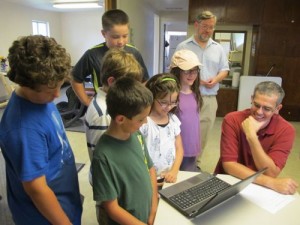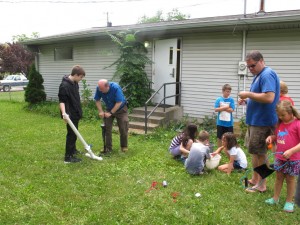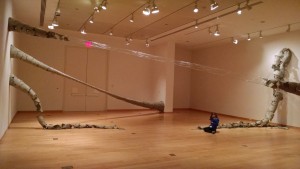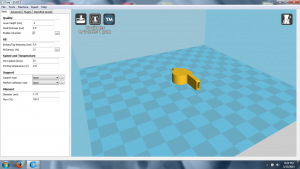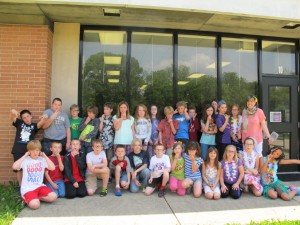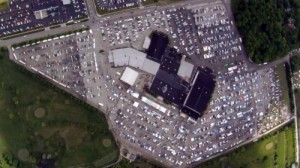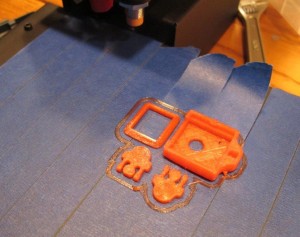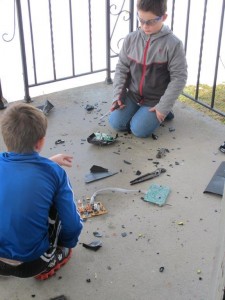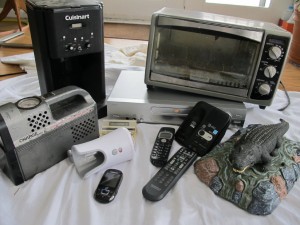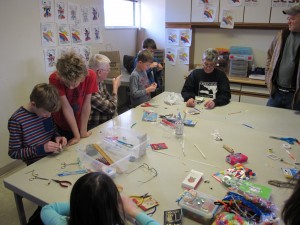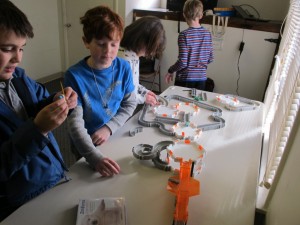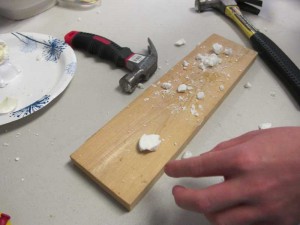
At our August 9th meeting we covered the Water Balloon Challenge, which is now up to 8 groups. Details on our project page, but they seem to be performing so well that we concluded that the Greencastle Farmer’s Market display in early September should be a demo, not the actual competition, since the Greencastle square may not be large enough!

For our ‘show & tell’ portion Chris brought liquid nitrogen in a dewar for experiments. After explaining describing liquid nitrogen and where it comes from, we poured the -196°C (-320°F) liquid over the marshmallows that Alice had brought in. We also froze a banana to drive nails into a piece of wood and then tried lots of things that kids and the adults suggested. Some that worked and some that didn’t!

Freezing balloons was a big hit, the kids had tons of questions which you can hear and see in the balloon video that Brian H. took. For the coin collectors there, we showed how older copper pennies are more malleable at minus 200 degrees Celsius than the new copper plated zinc pennies – which shatter after hitting them with a hammer!
There’s another good regional event for science in Bloomington on 8/29, Makevention, along with some other events on our events page. Last year we took one of the shovercraft (shoveable hovercraft) to the Bloomington event and did demonstrations. It’s well worth the trip if even to just to look at what other people are doing.
Since we’re starting to look for projects after the Water Balloon Challenge, I can’t help but mention the Lexus created hoverboard that uses liquid nitrogen. I just watched a video (long version) on it, sort of outdid our shovercraft but a lot of more engineering in that design. Now that would be an awesome next project!

